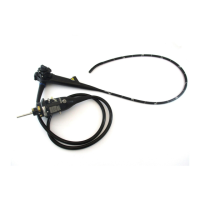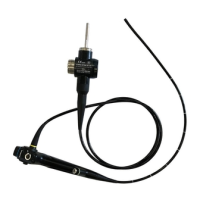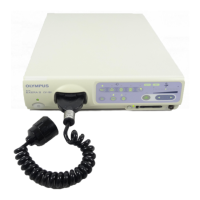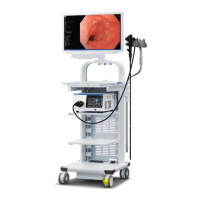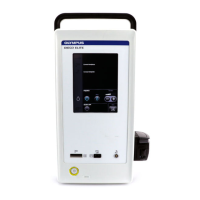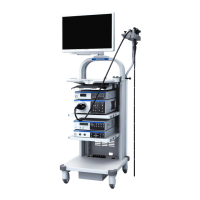4.3 Using EndoTherapy accessories
69
BF-190 Series OPERATION MANUAL
Ch.4
Laser cauterization
Endoscope model: all models except BF-P190 and BF-XP190
• The BF-P190 and the BF-XP190 are incompatible with laser cauterization.
Performing laser cauterization may cause patient injury and/or equipment damage.
• Do not perform laser cauterization while supplying oxygen. This may result in
combustion during cauterization.
• To avoid patient injury, burns, bleeding, perforation and/or damage to the
endoscope, never emit laser radiation before confirming that an appropriate
distance between the target and the endoscope’s distal end is maintained and the
tip of the laser probe is surely in the correct position in the endoscopic image.
• Always wear protective eyewear when performing laser cauterization. Otherwise,
operator injury may occur.
• Before inserting or withdrawing the laser probe, return the UP/DOWN angulation
control lever to its neutral position so that the bending section will be straight. If it is
bent, the instrument channel and/or the laser probe may be damaged.
• Allow the tip of the laser probe to cool down before pulling it from the channel. If the
laser probe is withdrawn while hot, channel damage may occur.
• Do not use a damaged laser probe. A laser probe with a damaged sheath or distal
end may cause patient injury and/or equipment damage.
• When using guide light of the laser unit, to avoid halation of the endoscopic image,
set the guide light output of laser unit to the minimum necessary.
The application of laser cauterization may change the color tone of the endoscopic
image. This does not indicate a malfunction.
Prepare, inspect and connect the laser unit and laser probe as described in their
instruction manuals.

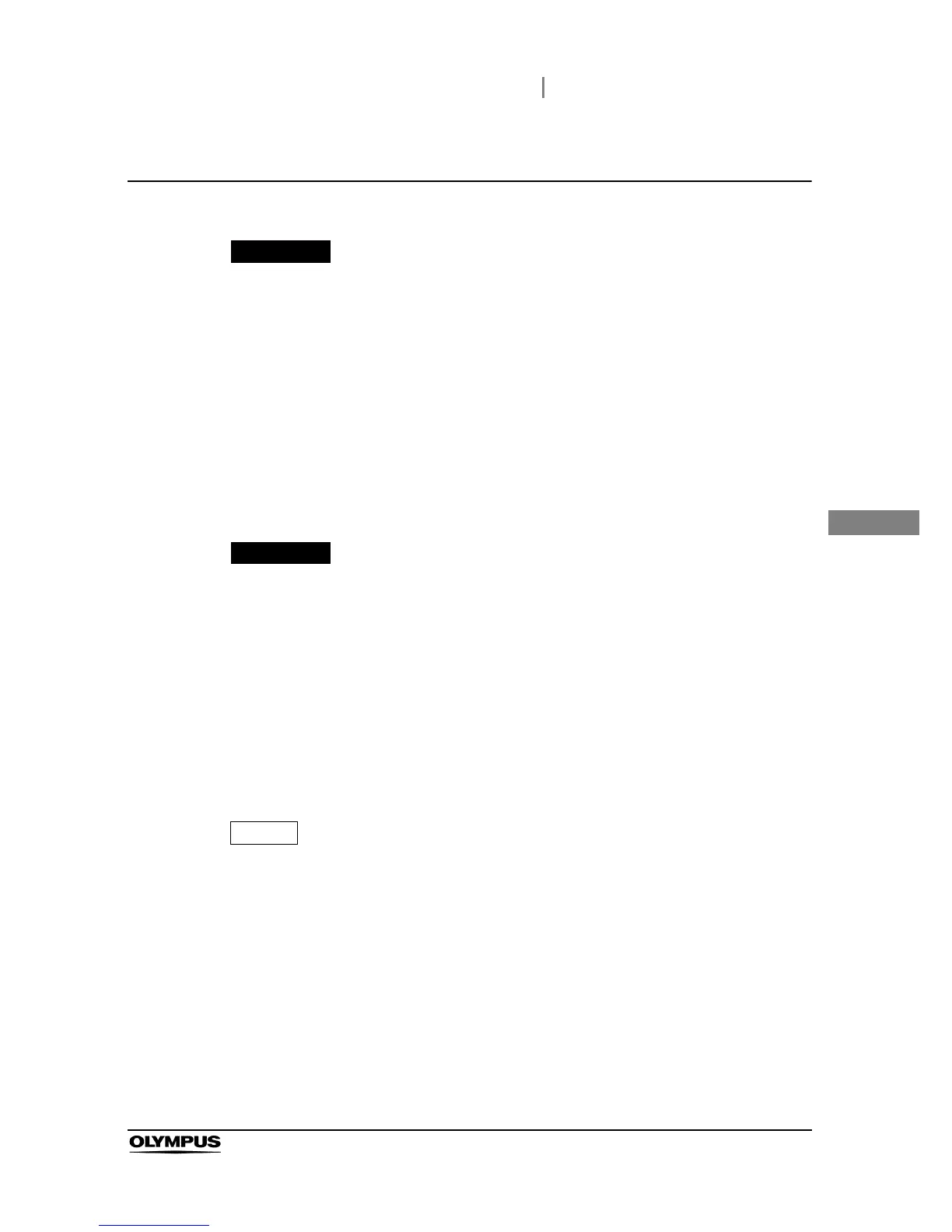